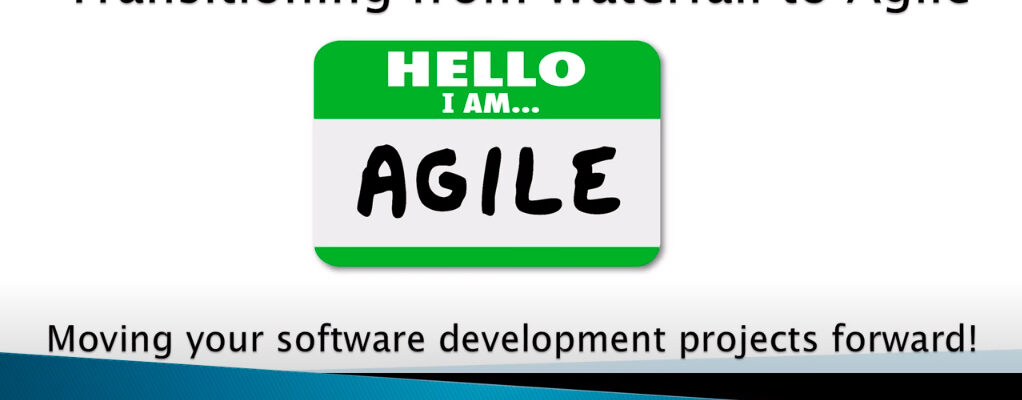Moving to Agile – A Project Management Perspective

Today we contrast what NOT to do with Best Practices for moving to Agile.
The Executive Summary
Don’t throw dozens of processes and directives against the wall to see what sticks. Plan and perform rigorous Change Management on only a few of the most important Agile processes and let your teams develop the rest.
Spend your valuable time where you can make the most lasting process improvements. Moving to Agile is just like any other complex set of big changes; they need to be done with people not to them.
6 Steps NOT to Do! (Violations ensure “Fad of the month” label and not much adoption)
- Emailing people “directives” on Agile even if this is from an executive. Especially not long emails.
- Have people who do not have to execute any process or author that process.
- Set punitive responses to new metrics.
- Use 1% of your time to follow up and expect people to devote a lot of their time when you aren’t.
- Once established, let each team create and execute their own processes and tools. Just like with every other type of effort, standards are needed for flexibility of resources, roll-up reporting, and general governance.
- Split up the effective new Agile team to try to use them to pollinate more teams.
10 Best Practices for Effectively Moving to Agile Using Change Management (Sorry no guarantees here.)
Implementing Agile can be handled as a Traditional project (which we recommend) or an Agile project (which we do not recommend). To learn enough to be good at Agile, you must roll out Agile processes for software development, not necessarily for process change management.
- Involve people from groups who will execute the process – plan your Change Management.
- Create a written plan for all process deliverables and reports leading to widespread adoption.
- Create a written schedule with assigned tasks for every single action for everyone.
- Negotiate your plan and schedule with representatives of each key area.
- Involve people who will execute the processes.
- Use recognition and set positive responses to new metrics.
- Use 10-20% of your time to follow up, especially serial collaboration, for weeks to months.
- Whenever adoption lags, spend positive time with those areas.
- Whenever adoption happens on schedule, spend positive time with those areas.
- When you have one successful team using Agile, make sure all their processes are written down and pick another team to complete implementation next. The old team can sit in on meetings and coach, but should not be given responsibility to jump-start the new team.
People Follow Leaders
- Whose actions align with their words.
- Who lead by example by doing, using, and paying attention to process and results.
- Who continue to invest time.
- Who solicit and act on feedback and give credit to others.
Conclusion
Anything hard, risky, or that involves a lot of change takes work on your part. Spend your valuable time where you can to make the most lasting process improvements. Moving to Agile is just like any other complex set of big changes; they need to be done with people not too them.
Contact us to book your Business Transformation Change Management Consulting Discussion or Course
Info@DataAnalysis.com #BusinessGoals #NextSteps #BusinessImprovement #Startup #ProcessImprovement #ChangeManagement #Turnaround
Our most popular soft skills course covers these and many other topics in an experiential way, and while useful for everyone, is especially valuable for those in or seeking or wanting to improve their performance in formal or informal leadership positions.
Topics include: Who We Are & What We Do as Leaders, Change Yourself First, Set and Fulfill Expectations, Lead By Example: Model the Behavior You Want, and many more. www.dataanalysis.com/training/courses/impactful-leadership-and-management-best-practices-for-supervisors-to-cxos
What Should Leaders Do Quickly and Effectively to move to Agile? – Your Thoughts?
Thoughts on how you can get the best from both your teams and outside consultants? Good luck and keep your eye out for ways to drive your goals forward!
Your path to business success.

